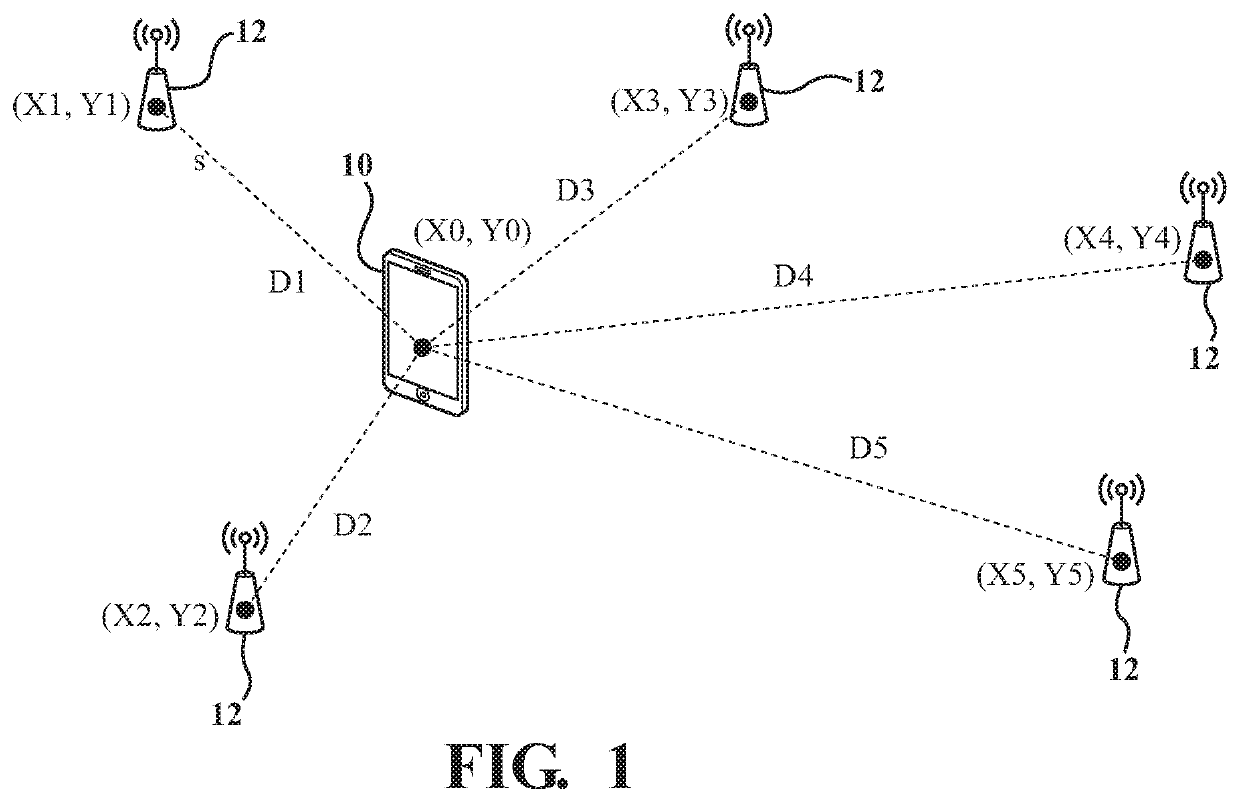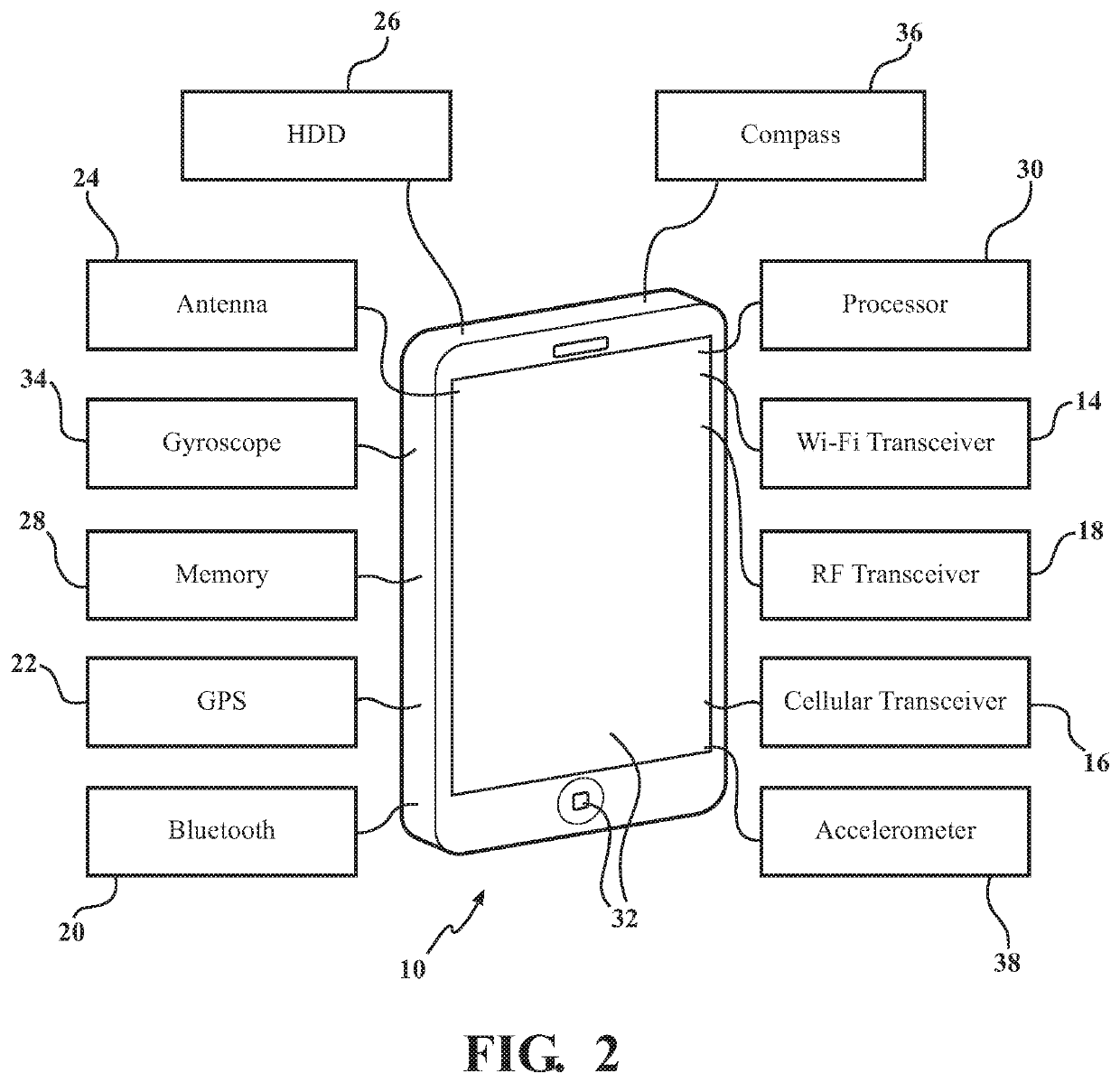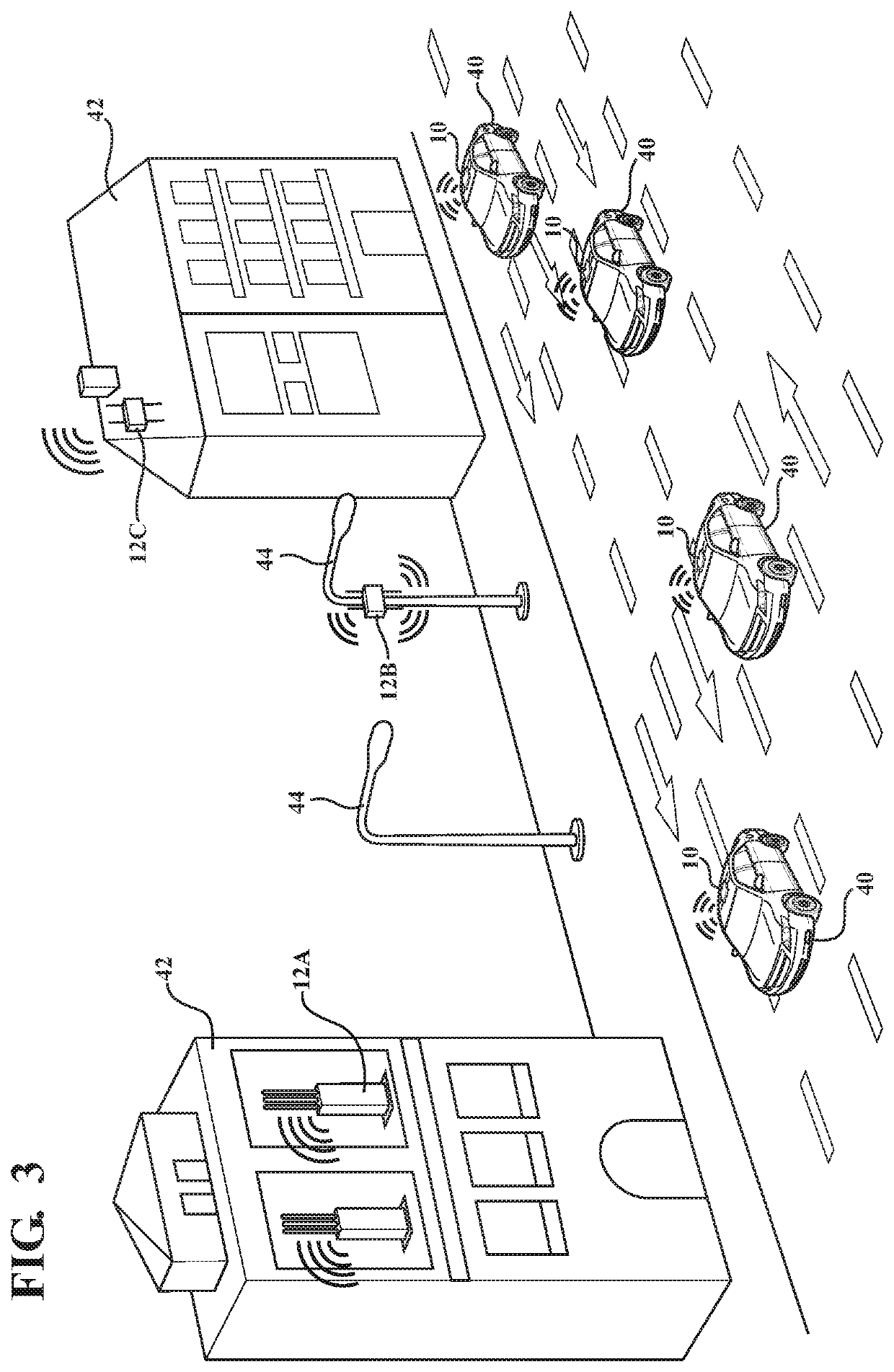Systems and methods for determining a location of an electronic device using bilateration
a technology of electronic devices and location information, applied in the direction of location information based services, transmission monitoring, vehicle components, etc., can solve the problems of difficult to receive an accurate gps signal, slow or impossible to obtain gps location information, and degrade gps signals, so as to achieve consistent and precise locations and accurate location determinations
- Summary
- Abstract
- Description
- Claims
- Application Information
AI Technical Summary
Benefits of technology
Problems solved by technology
Method used
Image
Examples
Embodiment Construction
[0022]Referring to the Figures, wherein like numerals indicate like or corresponding parts or steps throughout the several views, FIG. 1 depicts an electronic device, shown generally at 10, spaced from transmitting devices, shown generally at 12, and a location of the electronic device 10 is determined using bilateration. The method is able to determine the location of the electronic device 10 via geolocation identification in mobile Heterogeneous Networks (HetNet) environments. In some embodiments, the electronic device 10 may have connectivity to a transmitting device 12. Here, “connectivity” does not necessarily require that a wireless session be initiated between the transmitting device 12 and the electronic device 10; instead, it may be sufficient that data (e.g., IP / WLAN packets) can be successfully transmitted from the electronic device 10 to the transmitting device 12, or from the transmitting device 12 to the electronic device 10. For example, if the electronic device 10 is...
PUM
 Login to View More
Login to View More Abstract
Description
Claims
Application Information
 Login to View More
Login to View More - R&D
- Intellectual Property
- Life Sciences
- Materials
- Tech Scout
- Unparalleled Data Quality
- Higher Quality Content
- 60% Fewer Hallucinations
Browse by: Latest US Patents, China's latest patents, Technical Efficacy Thesaurus, Application Domain, Technology Topic, Popular Technical Reports.
© 2025 PatSnap. All rights reserved.Legal|Privacy policy|Modern Slavery Act Transparency Statement|Sitemap|About US| Contact US: help@patsnap.com



